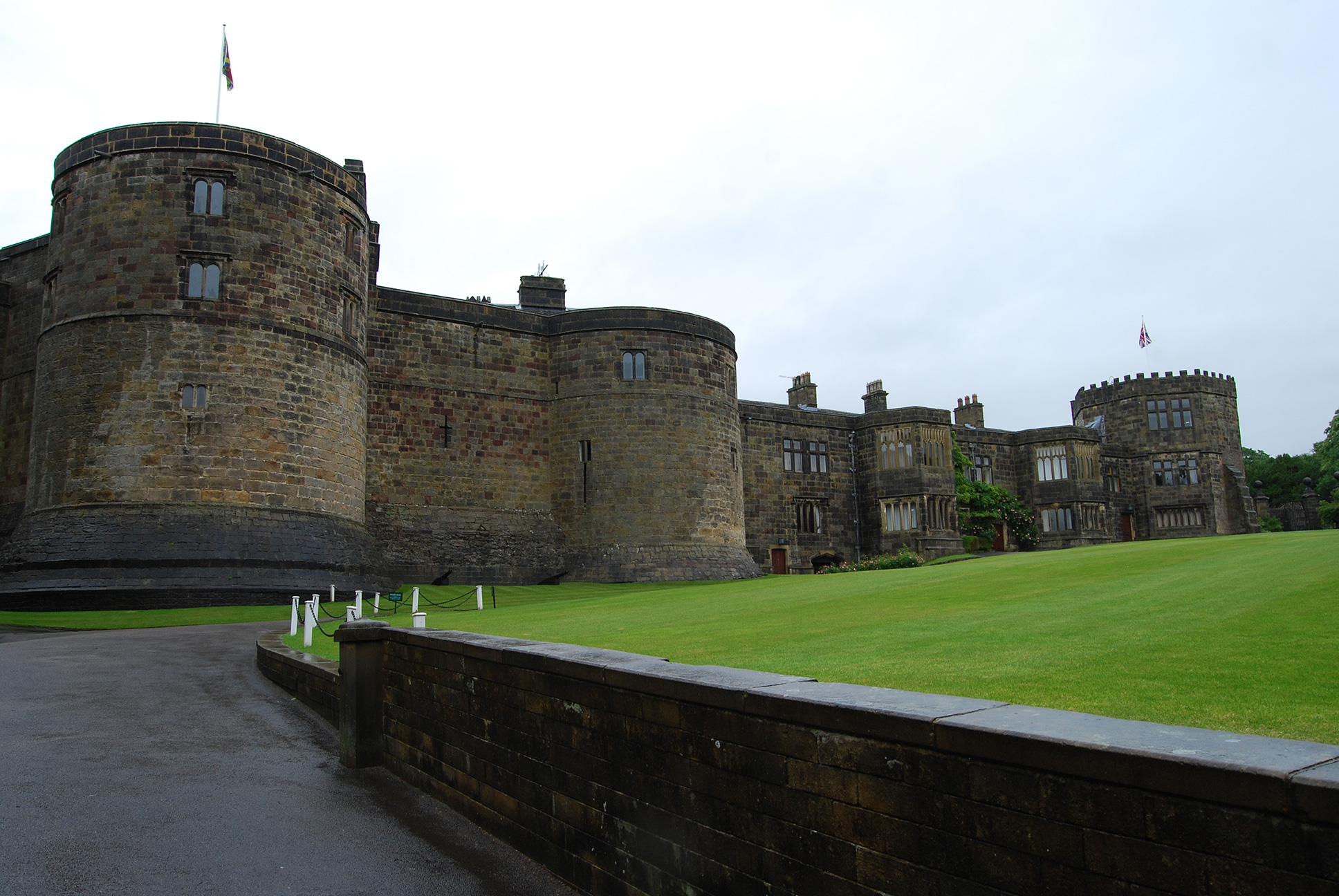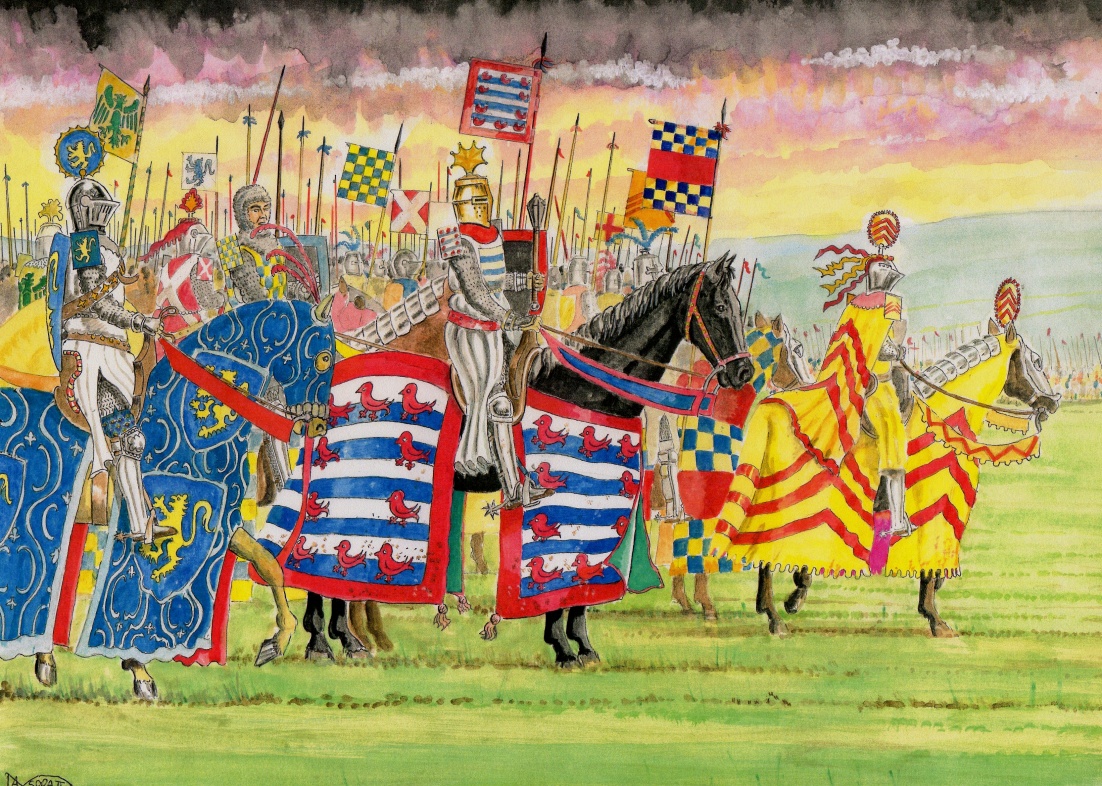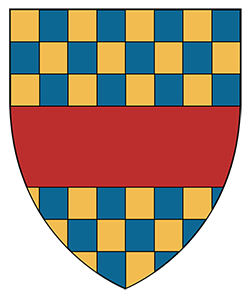Robert de Clifford - 1st Baron Clifford
Were I maiden, heart and body I would yield to such noblesse!
Robert de Clifford was an English soldier who became 1st Lord Warden of the Marches and was responsible for defending England's northern border with Scotland. He was born on April 1st, 1274, at Clifford Castle in Herefordshire, England. His parents were Walter II de Clifford, feudal Baron of Clifford, and Isabella de Vipont, daughter of Robert II de Vipont, feudal Baron of Appleby.

Robert's father died in 1282, and his grandfather, Roger de Clifford, died in 1286. When his mother died in 1281, Robert inherited Appleby Castle, Brougham Castle, and his grandfather's estates. Brougham Castle became an important stronghold for Robert in 1296 when the Wars of Scottish Independence began. King Edward I visited Brougham Castle in 1300.
Robert was sent with Henry Percy, 1st Baron Percy, to subdue the Scots, who asked for terms of surrender at Irvine. He was soon appointed Governor of Carlisle Castle. He was styled Warden of the Marches by Edward I and Lord Warden of the Marches by Edward II.
Robert de Clifford led the English Army when Edward I began the Siege of Berwick in 1296. This was an English victory and one of the brutalist masacres in medieval history. It was also the starting point of the First War of Scottish Independence.
During the Battle of Falkirk in 1298, he fought with Edward I to defeat William Wallace and the Scots. For this, he was awarded the Governorship of Nottingham Castle. He was created Baron de Clifford in 1299.
In 1300, he won great notoriety at the Siege of Caerlaverock Castle, where heralds on the famous Caerlaverock Roll recorded his coat of arms, which read:
"Strength from wisdom drawing, Robert Lord de Clifford's mind is bent on his enemies' subjection. Through his mother his descent comes from that renowned Earl Marshal at Constantinople, said to have battled a unicorn and struck the monster dead. All the merits of his grandsire, Roger, still in Robert spring. Of no praise is he unworthy; wiser none was with the King. Honoured was his banner, checky gold and blue, a scarlet fess. Were I a maiden, heart and body I would yield to such noblesse!"
In 1307, he was present at the death of King Edward I and was appointed counselor to King Edward II along with Henry de Lacy, 3rd Earl of Lincoln, Guy de Beauchamp, 10th Earl of Warwick, and Aymer de Valence, 2nd Earl of Pembroke. Later that year, Robert de Clifford was also appointed Marshal of England.
In 1310, Edward II granted him Skipton Castle in North Yorkshire and created him Lord of Skipton. Skipton Castle would become the principal seat of the Clifford family until 1676.
In 1312, he took part in the movement against Piers Gaveston. Gaveston's exclusive access to King Edward II provoked several members of the nobility. On May 4th, Gaveston was at Newcastle with the King and barely escaped a force led by Thomas Crouchback, 2nd Earl of Lancaster, Henry Percy, and Robert de Clifford. Gaveston returned to Scarborough Castle, where Robert de Clifford and the Earl of Lancaster besieged him. Gaveston surrendered on May 19th, 1312, and was executed without trial not long after.

Robert was later pardoned for his part in the murder of Piers Gaveston in 1313 and appointed Governor of Norham Castle in 1314, where he mustered men in preparation for battle in what would become known as the Battle of Bannockburn.
Robert de Clifford was killed in action at the Battle of Bannockburn in Scotland on June 24th, 1314, as part of a cavalry charge against Scottish spearmen in tightly packed schiltrons. He was buried at Shap Abbey in Westmorland and Furness, Cumbria, England.
